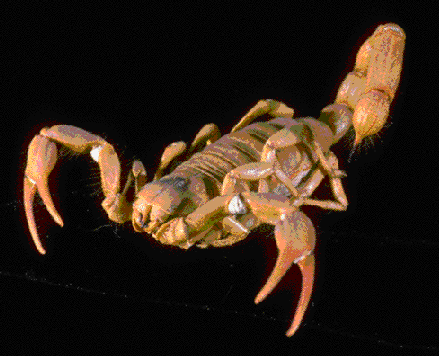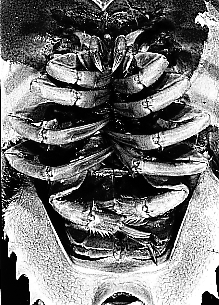



Cheliceramorpha: More on Morphology
What makes a chelicerate a chelicerate? The chelicerae, of course.






Cheliceramorphs are distinguished by having a body divided into two main divisions, technically called the prosoma and the opisthosoma. The prosoma bears six pairs of appendages. The first pair of appendages of a typical chelicerate are formed into claws, or chelicerae. The second pair of appendages, known as pedipalps, are also modified in various ways. In scorpions, for instance, the pedipalps form the large pair of claws, while the true chelicerae are inconspicuous structures near the mouth. In true spiders, the chelicerae are modified into fangs with poison glands, while the pedipalps of the males are modified for copulation. In horseshoe crabs the second appendages are walking legs that do not differ from the other four pairs; all five pairs of walking legs bear claws. Interestingly, chelicerates lack antennae, the only major clade of arthropods to lack them.

Appendages on the abdomen are reduced. Horseshoe crabs retain the flat, platelike gills of the abdominal appendages, bearing them externally. In terrestrial arthropods, external gills would be a liability, as water would rapidly be lost through them; the gills are covered by an abdominal plate, and form a specialized respiratory structure known as a book lung. Land arachnids have independently evolved spiracles -- small holes in the body wall -- that connect the book lungs with the atmosphere. This shows a degree of convergence with the Uniramia.


